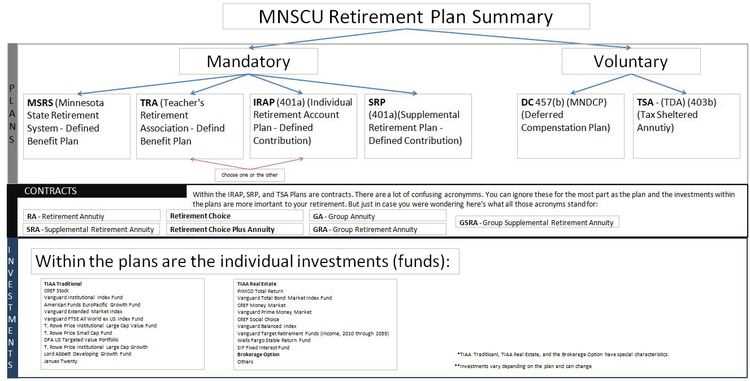What is a Government-Sponsored Retirement Arrangement (GSRA)?
A Government-Sponsored Retirement Arrangement (GSRA) is a retirement savings plan that is sponsored and administered by the government. It is designed to provide individuals with a way to save for retirement and ensure financial security in their later years.
GSRAs are similar to other types of retirement savings plans, such as 401(k)s or individual retirement accounts (IRAs), but they have some unique features and benefits. One of the main advantages of a GSRA is that contributions are often made on a pre-tax basis, meaning that individuals can reduce their taxable income by contributing to the plan.
Another key feature of GSRAs is that they typically offer a range of investment options, allowing individuals to choose how their contributions are invested. This gives participants the opportunity to potentially grow their retirement savings over time.
One important thing to note is that GSRAs may have certain restrictions and limitations. For example, there may be limits on how much individuals can contribute to the plan each year, and there may be penalties for withdrawing funds before reaching a certain age.
In summary, a Government-Sponsored Retirement Arrangement (GSRA) is a retirement savings plan sponsored and administered by the government. It provides individuals with a tax-advantaged way to save for retirement and offers a range of investment options to potentially grow their savings over time.
A Government-Sponsored Retirement Arrangement (GSRA) is a retirement plan established and managed by the government to provide individuals with a means to save for their retirement. It is a tax-advantaged savings vehicle that offers various benefits and incentives to encourage individuals to save for their future.
GSRAs are typically funded through contributions made by the individual, their employer, and in some cases, the government. These contributions are invested in a variety of financial instruments such as stocks, bonds, and mutual funds, with the goal of generating returns and growing the account balance over time.
Types of GSRA

There are different types of GSRAs available, depending on the country and its specific retirement system. Some common types include:
- Defined Benefit Plans: These GSRAs guarantee a specific benefit amount to the individual upon retirement, based on factors such as salary history and years of service.
- Hybrid Plans: These plans combine features of both defined contribution and defined benefit plans, offering a mix of guaranteed benefits and investment-based returns.
Tax Advantages
One of the key advantages of participating in a GSRA is the tax benefits it offers. Contributions made to the plan are often tax-deductible, meaning they can be deducted from the individual’s taxable income. This reduces their overall tax liability, allowing them to save more for retirement.
In addition, the investment earnings within the GSRA are typically tax-deferred, meaning they are not subject to taxes until the funds are withdrawn. This allows the account balance to grow faster over time, as taxes are not eating into the returns.
Portability and Accessibility
Another important aspect of GSRAs is their portability and accessibility. In many cases, individuals can carry their GSRA from one employer to another, ensuring that their retirement savings continue to grow even if they change jobs.
Furthermore, GSRAs often offer flexible withdrawal options, allowing individuals to access their funds when needed. While there may be penalties for early withdrawals, the ability to tap into the savings in case of emergencies or other financial needs can provide peace of mind.
Benefits of Participating in a GSRA

Participating in a Government-Sponsored Retirement Arrangement (GSRA) offers several benefits that can help individuals secure their financial future. Here are some key advantages of enrolling in a GSRA:
- Tax Advantages: One of the main benefits of a GSRA is the potential for tax advantages. Contributions made to a GSRA are often tax-deductible, which means that individuals can reduce their taxable income by contributing to their retirement account. Additionally, the growth of investments within a GSRA is typically tax-deferred, meaning that individuals do not have to pay taxes on any earnings until they withdraw the funds during retirement.
- Employer Matching: Many GSRA programs offer employer matching contributions, where the employer will match a certain percentage of the employee’s contributions. This can significantly boost the overall savings and retirement income of an individual. It is important to take advantage of employer matching programs to maximize the benefits of a GSRA.
- Investment Options: GSRA accounts often provide a wide range of investment options, allowing individuals to choose investments that align with their risk tolerance and financial goals. This flexibility allows individuals to diversify their retirement portfolio and potentially earn higher returns over time.
- Retirement Income: By participating in a GSRA, individuals can ensure a steady stream of income during retirement. The funds accumulated in a GSRA can be used to supplement other retirement income sources, such as Social Security benefits, pension plans, or personal savings. This can provide individuals with a more comfortable and financially secure retirement.
- Automatic Contributions: Many GSRA programs offer the option of automatic contributions, where a certain amount is deducted from the individual’s paycheck and deposited directly into the retirement account. This makes saving for retirement easier and more convenient, as individuals do not have to manually transfer funds to their GSRA.
Overall, participating in a GSRA can provide individuals with valuable financial benefits, including tax advantages, employer matching contributions, investment options, retirement income, and automatic contributions. It is important for individuals to carefully consider their retirement goals and consult with a financial advisor to determine if a GSRA is the right choice for their retirement planning needs.
Eligibility and Requirements for GSRA

Participating in a Government-Sponsored Retirement Arrangement (GSRA) comes with certain eligibility requirements and specific criteria that individuals must meet. These requirements ensure that the retirement benefits are provided to those who truly need them and have contributed to the system.
1. Age Requirement: To be eligible for a GSRA, individuals must reach a certain age, which is typically the retirement age set by the government. This age requirement may vary depending on the country and the specific retirement program.
3. Contribution Period: Individuals must have contributed to the GSRA for a certain period of time to be eligible for retirement benefits. This contribution period is usually measured in years and ensures that individuals have made sufficient contributions to the retirement arrangement.
4. Citizenship or Residency: Some GSRA programs may have citizenship or residency requirements. This means that only citizens or residents of a particular country may be eligible to participate in the retirement arrangement. These requirements are put in place to prioritize the retirement benefits for the citizens or residents of that country.
5. Income Limitations: Certain GSRA programs may have income limitations, meaning that individuals with higher incomes may not be eligible for the full benefits or may have reduced benefits. These income limitations are designed to target the retirement benefits towards individuals with lower incomes who may need the support more.
6. Other Requirements: Depending on the specific GSRA program, there may be additional requirements such as having a certain number of dependents, being disabled, or meeting certain health criteria. These additional requirements aim to address specific needs and circumstances of individuals and ensure that the retirement benefits are allocated appropriately.
How to Enroll in a GSRA
Enrolling in a Government-Sponsored Retirement Arrangement (GSRA) is a simple process that can provide individuals with a secure and reliable source of income during their retirement years. Here are the steps to enroll in a GSRA:
- Research and Understand the Options: Before enrolling in a GSRA, it is important to research and understand the different options available. This includes learning about the various types of GSRA plans, their features, and the benefits they offer.
- Contact the GSRA Provider: After determining your eligibility, you should contact the GSRA provider to obtain more information about the specific plan you are interested in. They will be able to provide you with the necessary forms and guide you through the enrollment process.
- Complete the Enrollment Forms: Once you have received the necessary forms from the GSRA provider, carefully review and complete them. Make sure to provide accurate and up-to-date information to avoid any delays or complications in the enrollment process.
- Submit the Forms: After completing the enrollment forms, submit them to the GSRA provider as instructed. This may involve mailing the forms or submitting them online through a secure portal. Be sure to follow the instructions provided by the GSRA provider to ensure a smooth enrollment process.
- Review and Confirm Enrollment: Once the GSRA provider receives your enrollment forms, they will review them to ensure all necessary information is provided. They may contact you if any additional information is required. Once your enrollment is confirmed, you will receive a confirmation notice or statement.
- Manage and Monitor Your GSRA: After enrolling in a GSRA, it is important to actively manage and monitor your account. This includes reviewing your account statements regularly, updating your beneficiary information as needed, and staying informed about any changes or updates to the GSRA plan.
Important Considerations for GSRA Participants

Participating in a Government-Sponsored Retirement Arrangement (GSRA) can provide individuals with a range of benefits and opportunities for financial security in their retirement years. However, it is important for participants to be aware of certain considerations to make the most of their GSRA.
One important consideration for GSRA participants is the contribution limits set by the government. These limits determine the maximum amount that individuals can contribute to their GSRA accounts each year. It is essential to be aware of these limits to ensure compliance and avoid any penalties.
2. Investment Options:
GSRA participants should also carefully consider the investment options available to them. Different GSRA programs may offer a variety of investment choices, such as stocks, bonds, and mutual funds. It is important to assess these options and choose investments that align with one’s risk tolerance and long-term financial goals.
3. Tax Implications:
4. Vesting Period:
Some GSRA programs may have a vesting period, which is the length of time participants must wait before they can access their contributions and any employer-matching funds. It is important to be aware of the vesting period and understand the implications for accessing funds in case of an emergency or financial need.
5. Retirement Age and Withdrawal Options:
6. Financial Education and Resources:
Lastly, participants should take advantage of any financial education and resources provided by their GSRA program. Many programs offer workshops, webinars, and online resources to help participants enhance their financial literacy and make informed decisions about their retirement savings. Utilizing these resources can empower participants to make the most of their GSRA and achieve their retirement goals.

Emily Bibb simplifies finance through bestselling books and articles, bridging complex concepts for everyday understanding. Engaging audiences via social media, she shares insights for financial success. Active in seminars and philanthropy, Bibb aims to create a more financially informed society, driven by her passion for empowering others.
